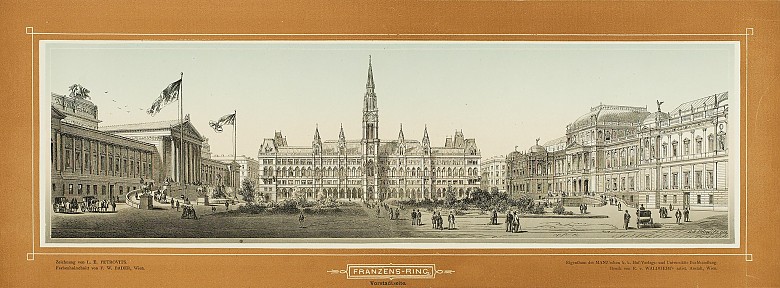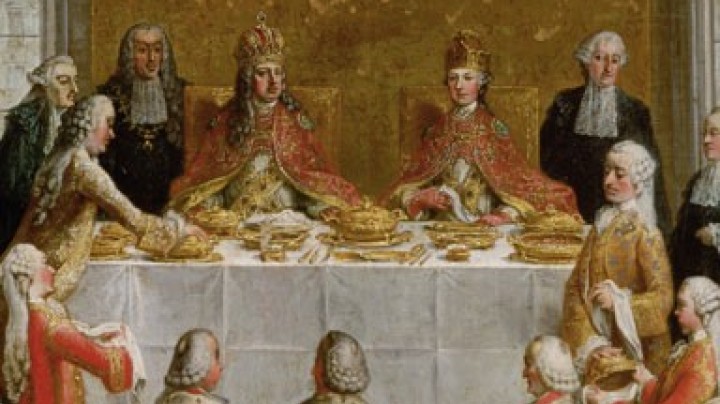Historicism – the architectural style of the Ringstrasse
A temple for the Parliament, a Renaissance palace for the sciences and a Roman forum for the emperor – Historicism gave each building its appropriate appearance.
The buildings that line the Ringstrasse were designed in the Historicist style, that is to say they were modelled on idealized versions of historical architectural styles but adapted to the technological and functional demands of the time in which they were built. The style chosen for each building was that which was held to best express its function Theophil Hansen (1813–1891) designed the Parliament building in the Hellenistic style, in the belief that the form of government in classical Athens had given birth to the truest form of democracy. The neo-Gothic City Hall by Friedrich Schmidt (1825–1891) reflected the civic autonomy of the cities in Flanders. The Votivkirche by Heinrich Ferstel (1828–1883) was built in the French Gothic style, while in his designs for the university Ferstel took as his model the Italian Renaissance, the period when art and science flowered in Europe. The Imperial Forum is the last in this series, drawing on the fora of the Roman emperors.
One of the major ideas of the Historicist movement was the concept of the Gesamtkunstwerk, or synthesis of the arts: The Ringstrasse as a whole as well as each individual building on it was conceived as a work of art. The architect thus also had to concern himself with the decoration of the buildings, sculpture and painting being regarded as constituent parts of architecture. As a consequence there was an upswing in the craft trades. An art industry started up, commissioned to produce large quantities of like-for-like objects in the shortest possible time. In 1871 the emperor issued an order for the construction of the Imperial-Royal Museum for Art and Industry on the Stubenring together with an adjoining school, the first museum of arts and crafts to be built in continental Europe. The idea for this museum came from Rudolf von Eitelberger-Edelberg (1817–1885), who after visiting a similar collection in London had persuaded the emperor to unite art and industry under one roof. Its chief aims were educational.
























